KEG: Post II
14. Rhe1?
Missing the very strong 14. d5 after which White would have strong pressure and excellent play (e.g., 14...exd5 15. cxd5 Na5 16. QxQ RxQ 17. Ne5 Re7 18. f4). After 14. Rhe1, the position was:
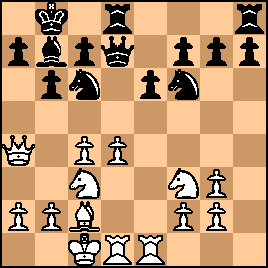
click for larger viewIn his commentary on the game, Gunsberg spoke of his "great difficulties at this stage. But with 14...Qe7 or 14...a6 , his position would not be that bad. But here he blundered--a fact overlooked in his commentary: 14... Rhe8?
After this lemon, Black was simply lost.

click for larger viewWhite to move and win.
15. Qb5?
Missing the winning 15. Ne5! (e.g., 15...NxN [best] 16. dxN). Not all that hard to find over the board. But both players missed it, as did Gunsberg in his later commentary on the game. 15... h6
"Black did not care to play a6 [yet--KEG]...for then Qg5 would threaten the king's side pawns." (Gunsberg) 16. Ba4
"Again well played." (Gunsberg)
Agreed, but White had no significant edge even after this good move: 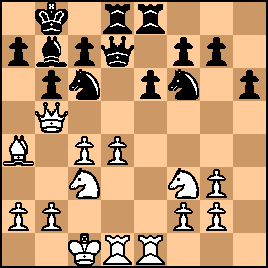
click for larger view16... a6
An unnecessary weakening. Black would be entirely fine after 16...Qe7. 17. Qb3
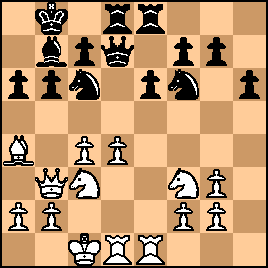
click for larger view17... Ng4?
"It was a question of how to meet the coming rush." (Gunsberg) Whatever it was that Gunsberg meant by the "coming rush," this move was bad. Also doubtful would have been 17...Na5, but not because of Gunsberg's proposed 18. Qb4 but rather because of 18. Qc2 (or maybe 18. Qa3). After the text, Black was almost certainly lost. 18. d5!
A powerful advance that seems to leave Black without adequate resource: 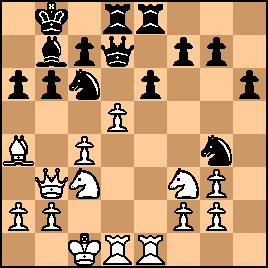
click for larger view18... exd5
19. RxR QxR
20. cxd5 Nxf2
Best but insufficient.
The position was now:
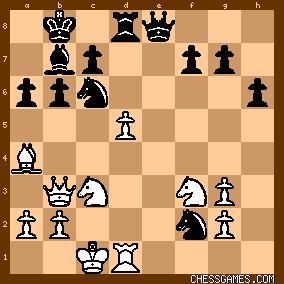
click for larger viewWhite to play and win.
Instead of finding the winning line here, Marco instead blundered away the game, as I will discuss in my next post on this game. | 




































